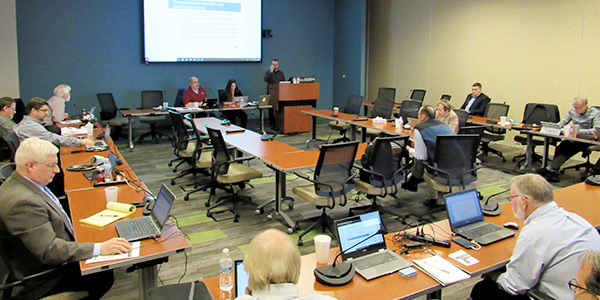By Amanda Durish Cook
CARMEL, Ind. — MISO’s Reliability Subcommittee will next year examine whether the RTO’s footprint is suffering from an excess of load-modifying resources.
Speaking during a conference call Thursday, Chair Bill SeDoris — who will again serve in that role in 2020 — said the subcommittee will begin discussions on the issue at its Jan. 30 meeting.
MISO stakeholders are increasingly wondering at what point LMR saturation will cause reliability concerns, with some contending the RTO may need to limit the number of emergency-only resources eligible for compensation.
SeDoris has suggested MISO undertake a study similar to its renewable penetration study, in which the RTO would seek to measure at what point an influx of LMRs would disrupt the system.
RSC Liaison Mike McMullen said MISO is currently working on a more general analysis of LMR effectiveness, with results to be presented at the Resource Adequacy Subcommittee’s Jan. 8 meeting. He said it might be helpful for RSC members to listen in even though the study won’t focus on LMR saturation.
“Understand, it’s not the same conversation that will happen at the RSC,” he told stakeholders.
Eligible End-User Customers sector representative Kevin Murray said he was surprised the stakeholder community was concerned about a surplus of LMRs.
“Physically, you balance the system by shedding load. LMRs volunteer to be first in line to shed load. If you run out of load-modifying resources, you shed firm load,” Murray said during MISO Board Week last week.
“We have to have some steel in the ground to generate electricity to have load to shed in the first place,” SeDoris responded.
MISO is attempting to both define a possible limit on LMRs and make its procedures clearer for market participants who have criticized the communication during emergency events as being confusing. (See Stakeholders: MISO System Fix Too Late for Summer.) The RTO will also deliver a presentation on LMR communication and documentation in the MISO Communication System at the Jan. 30 RSC meeting.
LMRs are not capacity resources but are considered planning resources during emergencies, able to help meet the planning reserve margin requirement for auction clearing prices. They must respond five times per year, which includes a generator verification test and four acknowledgements of MISO’s scheduling instructions. A market participant can choose to forgo the test but risks being levied three times an LMP-based penalty for nonperformance during an emergency event. MISO must first declare an emergency before accessing LMR capabilities.
MISO allows resources to register as both LMR and emergency demand response, a point of confusion for some stakeholders. Emergency DR is an informal resource category created by MISO to allow demand resources to help the system during emergencies without a more involved registration process.
Stakeholders have also raised the idea of MISO not including LMRs in its planning resource margin calculation. Some have also asked the RTO to evaluate the capacity payments LMRs receive relative to their effectiveness during emergencies.
“Maybe LMRs aren’t pulling their weight,” MISO planning adviser Davey Lopez said during the RASC’s Dec. 3 meeting.
The Upper Limits?
MISO held an informational workshop in October dedicated to the operation of LMRs. There, MISO adviser Michael Robinson said the RTO has yet to discern how many LMRs should be considered too much in the resource mix. He brought up mathematician and father of linear programming George Dantzig’s diet problem, where he sought to create an optimal diet from an algorithm but ended with suggestions such as 500 gallons of vinegar, 200 bullion cubes and 2 pounds of bran as meal choices. The suggestion led Dantzig to introduce upper bounds in linear programming.
“So we may have that problem with LMRs. Right now, we have 10,000, 11,000 MW. The question is … is there an upper limit?” Robinson said.
LMRs’ contribution is by nature difficult to calculate, he said. “How do you prove consumption that does not occur? … We’re trying to prove the counterfactual consumption level.”





